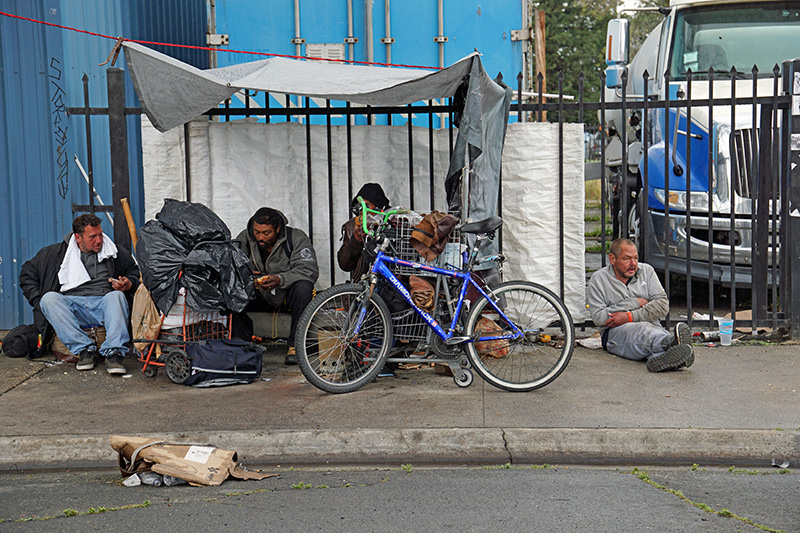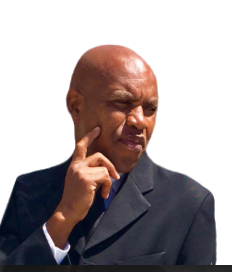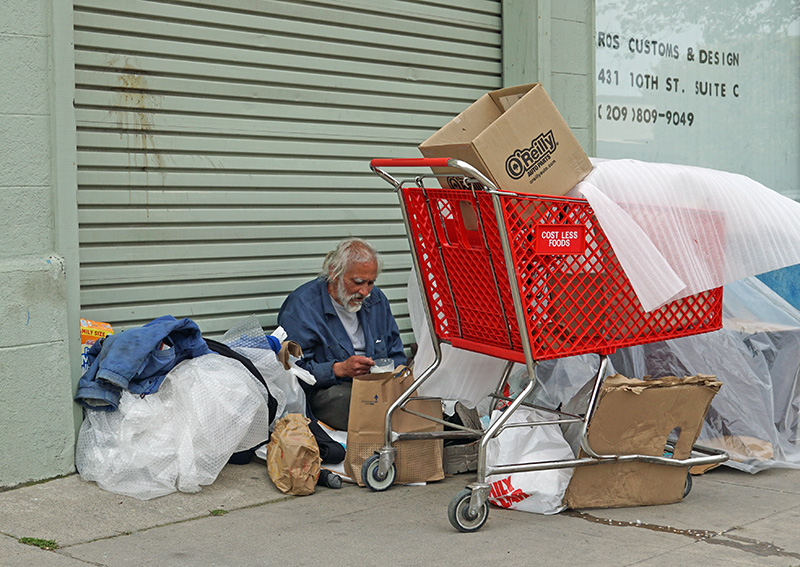Eric Protein Moseley is a social impact documentary filmmaker working on the film “Understanding the Spectrum: Exploring the Classes of Homelessness.”
I am a social impact documentary filmmaker from Detroit, now living in Richmond, California. My journey is deeply personal and profoundly shaped by nearly two decades of battling chemical dependency and homelessness, mostly while raising my child as a single parent. My experiences traveling from coast to coast, often facing the harsh realities of living without stable housing, have fueled my commitment to addressing this critical issue. Now, through my global campaign, “Mandate Future Politicians to Prioritize Homelessness,” I am dedicated to driving systemic change and elevating homelessness to the forefront of political and public discourse.
This campaign aims to replicate the success of cannabis advocates by making homelessness a central issue in political and public discussions, alongside pressing topics like the economy, abortion rights, and immigration. Despite its global reach, the campaign has faced significant hurdles in gaining traction in California.
I am currently focusing on a 232.8-mile stretch from Stockton to Bakersfield, where the homelessness crisis is particularly acute. In San Joaquin County, the number of homeless individuals has surged to 4,732 as of August 2024 — double the number recorded in 2022. Of these, 1,263 people have shelter, while 3,469 remain unsheltered. Individuals living in vehicles have risen by 37% since 2022. In Stockton alone, a 2024 point-in-time count found 2996 people experiencing homelessness, with only 545 in shelters.

In 2023, San Joaquin County had approximately 1,700 year-round beds for transitional housing and emergency shelter. Unfortunately, this capacity could only accommodate about half of the unsheltered population. In response to this crisis, the Continuum of Care and the City of Stockton have recently approved a regionally coordinated Homeless Action Plan to make homelessness “rare, brief, and non-recurring.” This plan takes a critical step forward, but we still need to tackle much more work to address the scale of the issue.
Twenty-six miles to the south, in Modesto, homeless shelters are consistently full and the city’s strategy of frequent sweeps just moves homeless people from one place to another. Modesto City Councilman Nick Bavaro, whose District 4 has a large percentage of the city’s homeless population said,
“All you’re doing is just shuffling people from Oakdale Road and Scenic to Claus and Scenic.”

Successful interventions in other regions provide hope and direction. For instance, South Salt Lake is building the $47 million Kem and Carolyn Gardner Mental Health Crisis Care Center, which will open in 2025. This initiative integrates supportive housing with comprehensive mental health services and job training. Early indicators suggest that this holistic approach could substantially reduce homelessness and improve overall well-being.
Similarly, Seattle’s “Pathways Home” program demonstrates the effectiveness of combining supportive housing with job training and mental health support. These programs illustrate the potential for effective solutions and offer valuable lessons for addressing homelessness in California.
My personal experiences with homelessness have profoundly influenced my advocacy. I vividly recall the nights spent on the streets, the struggle to find safe shelter for my child and me, and the overwhelming sense of isolation and desperation. These experiences drive my commitment to this cause and underscore the urgent need for systemic change. They also provide a unique perspective on the real-life impacts of homelessness and the importance of addressing it comprehensively.
Internationally, our campaign has made notable strides. In a publication in the nation’s capital, I was able to encourage voters to prioritize homelessness while talking about other critical issues such as women’s health, immigration, and housing.

However, the campaign has encountered significant challenges, such as limited media coverage in California and resistance from some local stakeholders. To address these obstacles, we are enhancing our outreach efforts, building stronger alliances with local advocacy groups, and using social media to reach a wider audience.
The recent Supreme Court ruling on homelessness has highlighted the urgency of this issue. Governor Gavin Newsom’s approach to addressing homelessness by sweeping encampments without a solid, structured plan seems inadequate—like trying to skydive in the desert with scuba diving equipment. On the other hand, Los Angeles Mayor Karen Bass has taken a proactive stance by declaring homelessness a state of emergency on her first day in office. This decisive action has set a powerful precedent, focusing on immediate relief and implementing targeted solutions such as advocating for low-income housing and enhancing mental health services. Her approach contrasts sharply with Newsom’s reactive measures and underscores the need for comprehensive, sustainable strategies.
We will mobilize public support and drive political accountability to push for effective, long-term solutions to this escalating crisis. Please support our campaign, advocate for change in your community, and vote for leaders prioritizing solutions to homelessness. Together, we will make a difference and work towards a future where homelessness is rare, brief, and non-recurring.

Eric, great to hear of your advocacy and quest “where homelessness is rare, brief, and non-recurring.”. We have good things happening 26 miles south too but not nearly enough to make much of a difference. If we had good measurement we’d probably see the inflow is greater than outflow which gives the wrong impression that we’re not doing anything.
Anyhow, hope we can break bread someday soon and share notes. In the meantime a couple of resources you might want to checkout if you haven’t already are: Paul Boden at https://wraphome.org/mission-goals/board/ and https://invisiblepeople.tv/
Frank,
Thank you vey much. You can reach me at Businesstree@outlook.com
I am looking forward in hearing from you,
EPM
Thank you Eric Protein Moseley for introducing yourself, your motivations, and your worthy aims.
I am encouraged. In order to assist the locals to focus best on the “232.8-mile stretch from Stockton to Bakersfield, where the homelessness crisis is particularly acute”, would you be so proactive as to provide Valley Citizens with a list (and, update it as you progress) of the localized advocacy groups you learn of. Each group need not be a certain size for us to want to be in contact. Name of group (if have one), or contact person, contact address and/or phone no, would be a blessing from you. Yours included, especially.
The fact that we do not know of each other is our inconvenience. If you are too busy to provide such, ask them simply to submit a reply in The Valley Citizen introducing themselves and contact info. We need to form a hub of like minded people, a grassroots clearinghouse, of sorts.
Hello,
You may reach me at Businesstree@outlook.com
EPM